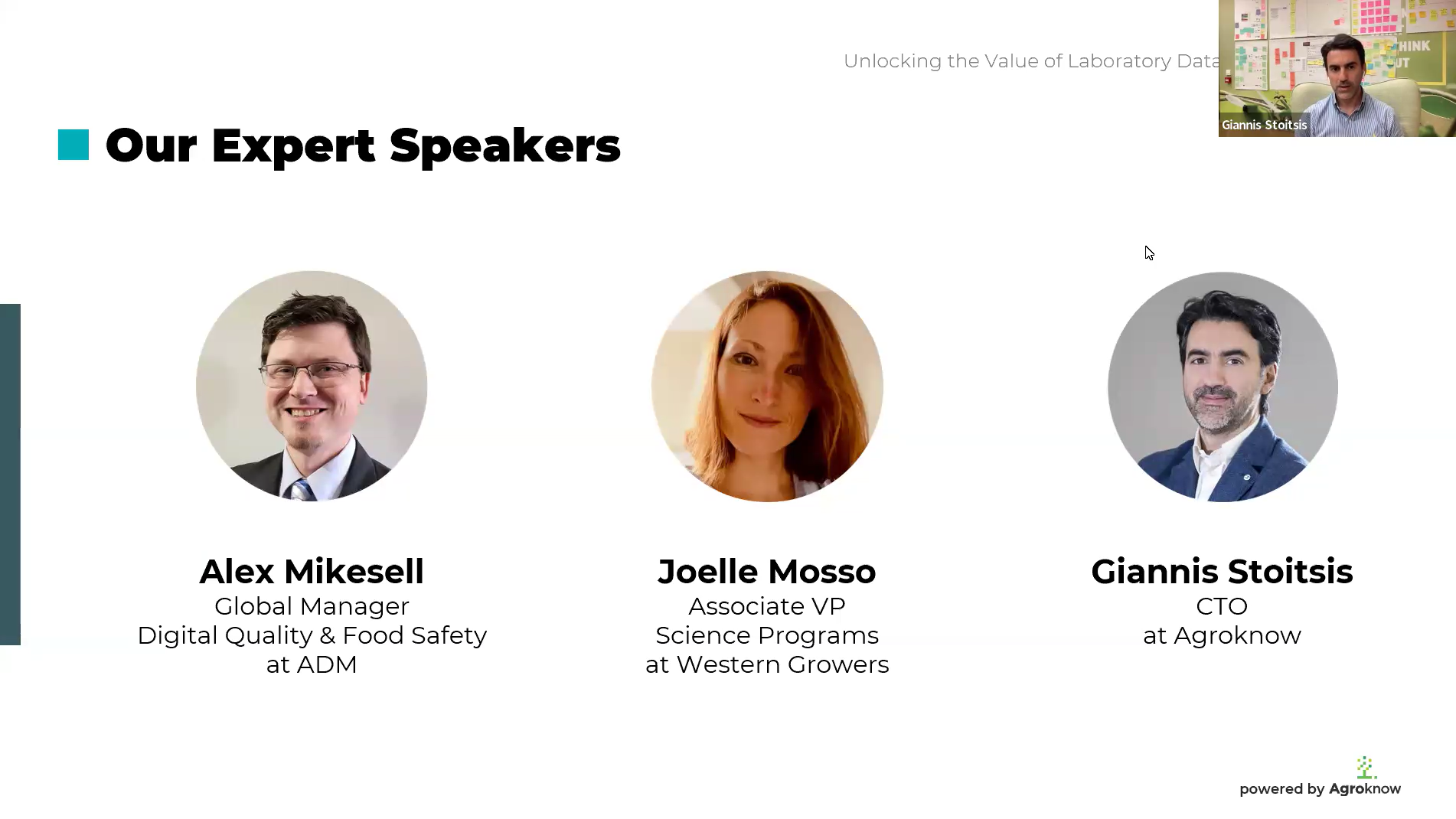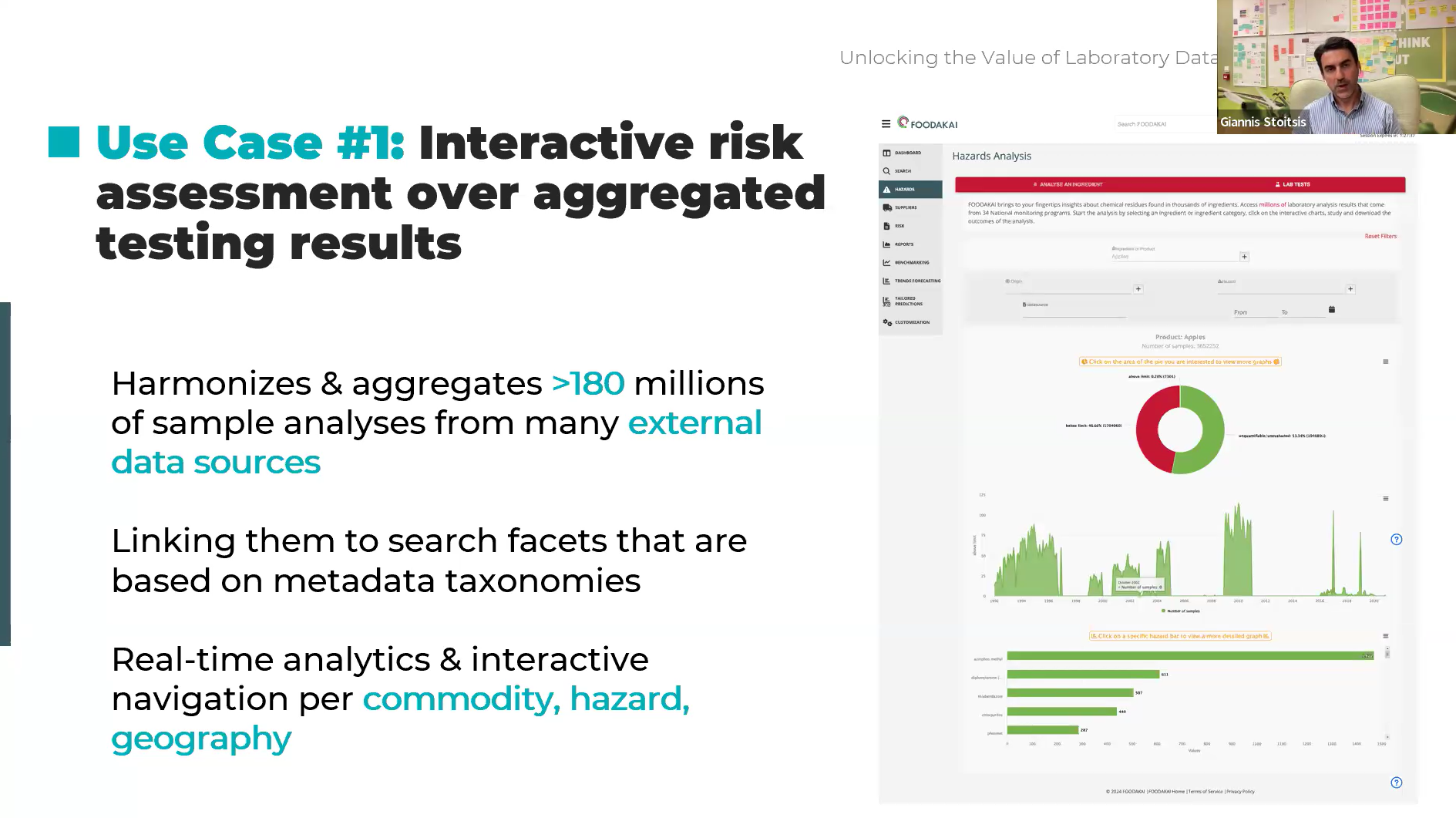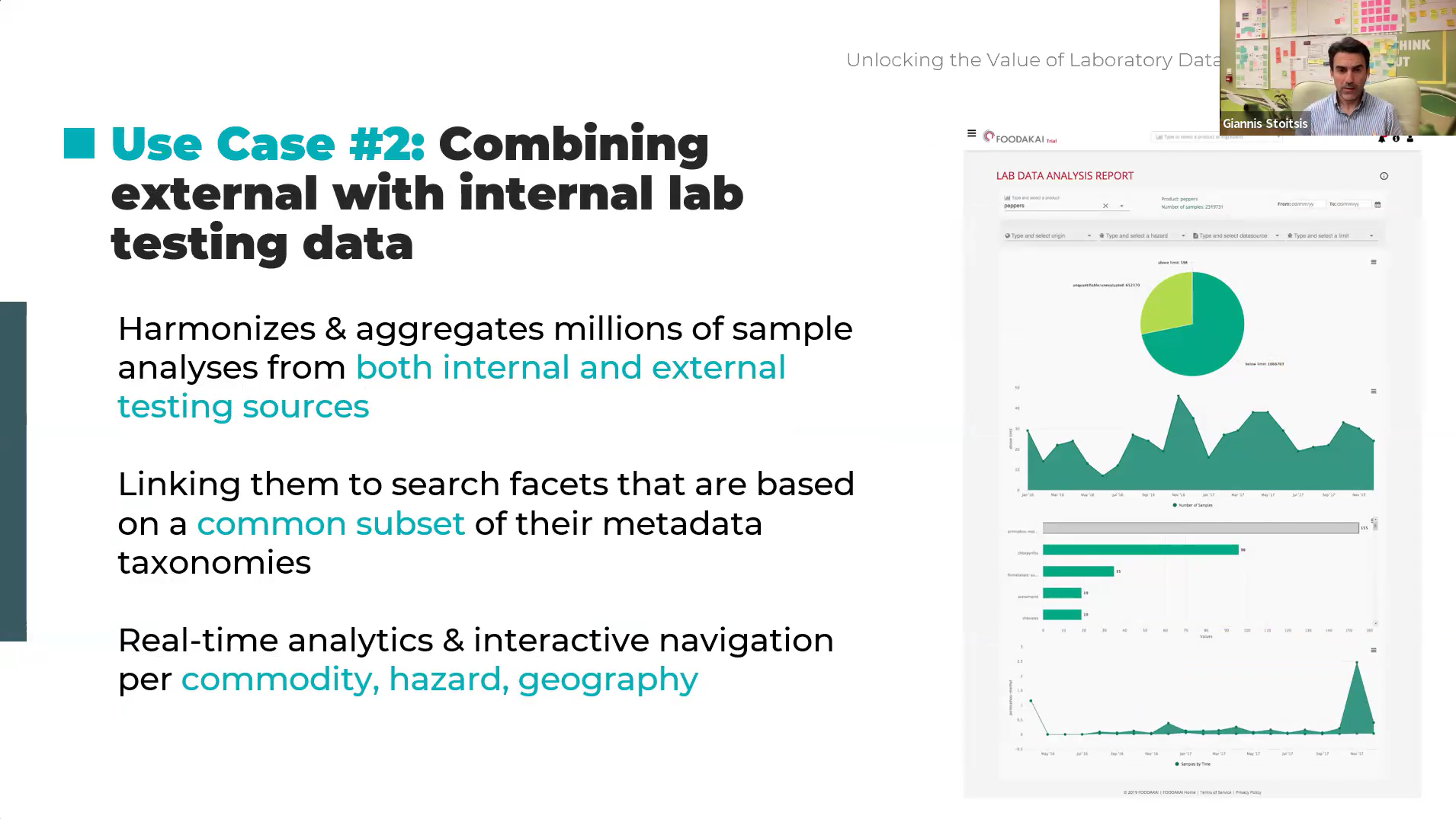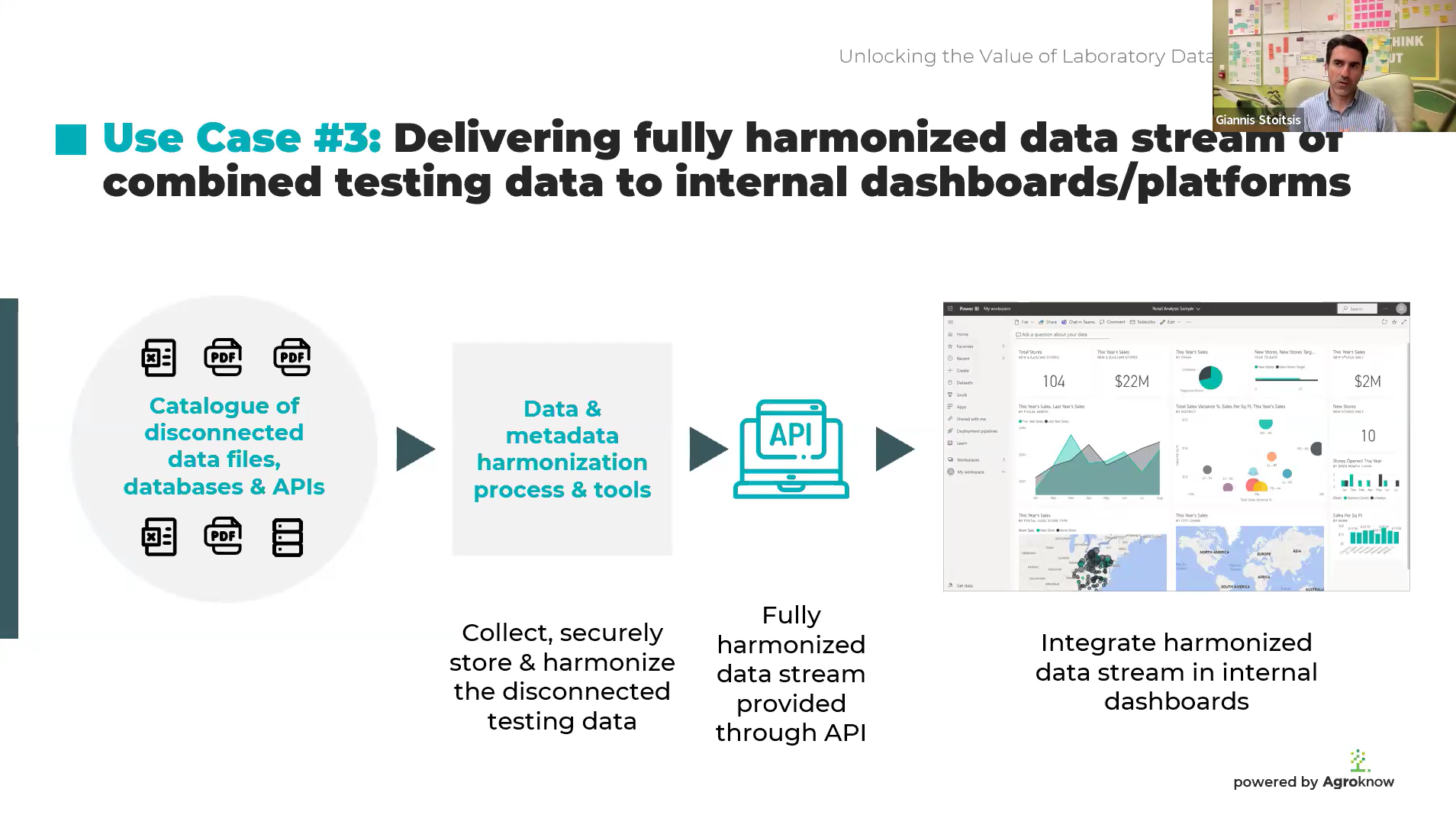
Webinar: Unlocking the Value of Laboratory Data in Risk Prevention
Last week, Agroknow, had the pleasure of hosting an insightful webinar on the application of AI and Predictive Analytics inillustrating the value of laboratory data in enhancing food risk prevention.
The webinar’s host, Nikos Manouselis, Agroknow’s CEO, was joined by Alex Mikesell, Global Manager Digital Quality and Food Safety at Archer Daniels Midland, Joelle Mosso, Associate VP of Science Programs at the Western Growers Association, and Giannis Stoitsis, CTO at Agroknow.

The main question that was posed for them was: how can the value of laboratory testing data be extracted by utilizing advanced AI technologies & data analytics?
Among the topics that were discussed were:
- the main challenges that food manufacturers and retailers face in collecting, combining and utilizing lab test results from their food safety monitoring programs
- how companies can harmonize, combine and aggregate lab testing data from a variety of internal and external systems
- how different and heterogeneous sources of testing data can be integrated in digital & interactive dashboards
- the value of combining results from various food safety testing programs and generating shared insights with other industry peers.
Key Takeaways
Over the 1-hour panel discussion, the four panellists discussed about the major challenges when it comes to extracting the value of such laboratory data, new initiatives, methodologies for data harmonization as well as utilization of such data through 3 Use Cases.
What was most highlighted was:
- 40% of the webinar’s audience voted that processing, combining and integrating high quality data about external risks to their supply chain to be challenging for their companies.
- Diving into actual laboratory testing data: what they look like, what testing looks like, and the different LIMS data management software available.
- The importance of driving proactive risk management processes and lab or facility testing operational oversight by unlocking of the value of such data.
- The challenge consistency of lab testing data due to their different formats (structured or unstructured, in spreadsheets etc), languages, timeliness (real time or delayed data).
- Data sharing as way to anonymously pull together data from different sources and teams, highlighting the need for testing culture changes.
- The challenges, approaches, good practices for the process of harmonizing laboratory testing data.
Use cases on the utilization of Harmonized Laboratory Data
Interactive Risk Assessment Over Aggregated External Testing Results
By harmonizing and aggregating sample analysis data from publicly available sources worldwide, they can be linked to search faucets based on metadata analysis and provide actionable real-time analytics per commodity, hazard and geography.

Combing external and internal lab testing data
Through the harmonization and aggregation of millions of sample analysis from external and internal testing sources, which are then linked to search faucets that are based on a common subset of metadata taxonomies, we can have real time analytics & interactive navigation on per hazards, commodity, and geography.

Delivering fully harmonized data stream or combined testing data to internal dashboards/platforms
By collecting and securely storing and harmonizing vast catalogues of disconnected, data files, databases into a fully harmonized data stream through APIs, these can be integrated in food & beverage companies’ internal dashboards.

Want to see the full discussion. Watch below.
Want to receive helpful food safety intelligence in your inbox?








